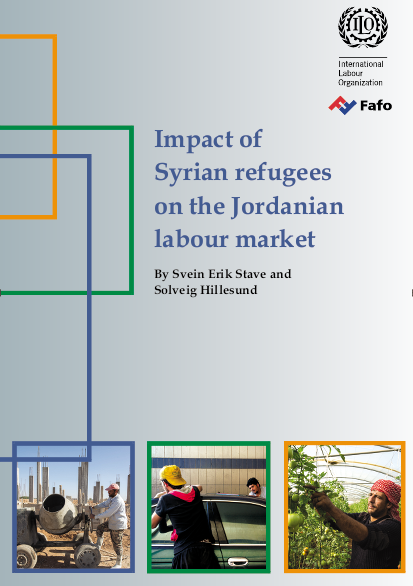Findings from the governorates of Amman, Irbid and Mafraq

This report presents the results from a study on the situation and changes in the Jordanian labour market in relation to the large influx of Syrian refugees to the country since March 2011. The study is primarily based on a household survey carried out in February and March 2014, and which covered a total of 3,800 households in the governorates of Amman, Irbid and Mafraq, including the Zaatari refugee camp. In addition, complementary information has been obtained from qualitative interviews and from secondary sources, including reports and news media.
The general objective of the study has been to assess the implications of the large influx of Syrian refugees to Jordan on the country’s labour market, primarily by identifying current trends and future threats that can be attributed to the influx of Syrian refugees. Although the main focus of the report is on implications for Jordanians, the survey also covers the situation for Syrian refugees and their interrelationship with the Jordanian labour market. This aspect is not only important for improving the knowledge on the refugees’ situation as such, but also for better understanding the present and future labour market implications for Jordanians.
This analytical report is accompanied by three separate tabulation reports, which present the results from the household survey in more detail for the three population groups covered in the survey, respectively: The Jordanian host population; the Syrian refugee population outside refugee camps; and the Syrian refugee population inside Zaatari refugee camp.